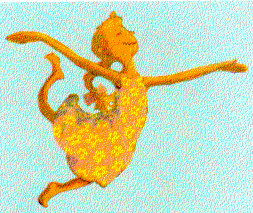
|
Basics of Writing a Picture Book- A published children's picture book is usually 32 pages. The front matter (title page, dedication, copyright) takes up the first few pages. Your story begins on pages 3, 4, or 5. You do NOT need to find an illustrator. You are cutting your chances of being published in half if you submit an already illustrated story. Most picture book texts are under 1000 words. Send your manuscript in regular manuscript format or poetry format, if in rhyme. |
|
Dummy It Up, Genius-Use 8 pages of paper, fold in half and number 1-32. This will serve as your picture book dummy. See how your text lays out in that format. Pay attention to page turns. Does your reader wonder what will happen next? Check your pacing, do you have too much text for one scene or one page? Picture in your mind at least 15 double-page spread illustrations for your book. Also do a storyboard. (See storyboard handout.) |
|
Picture Book Characters- think Cat in the Hat--what makes you remember the character? Are they zany, amazing, funny, witty, cute, heart-touching, smart? Study characters of other famous picture books. |
|
Picture Book Plots- A good picture book starts with a hook and builds to a climax. Even concept books often follow a story-line. As you read successful picture books, look for plot patterns. Look for cumulative or chain plots, circular plots, question and answer formats, logical sequences, and time-frame plots. |
|
Poetic Tools of the Trade- rhythm, rhyme, repetition, parallel structure, refrains, alliteration, onomatopoeia, similes and metaphors, word plays, word inventions, parody, funny sayings, and reader interaction. |
|
Read it OUT LOUD!-picture books are made to be read aloud. Hear how your story flows. Does your tongue get twisted? Have someone else read your book to you. Make a note where they stammer or stumble. |
|
Read and Analyze: Type in and study successful picture books. What is the hook? What’s the plot? Who are the characters? Count the words? What poetic tools are utilized? Look for books similar to what you write. Who is the publisher? Who was the editor who bought the book? The editor is sometimes listed in acknowledgments or on the dedication page. Go to bookstores and see the current bestsellers. |
|
Picture Book Themes-Like all great books, great children's picture books have a strong, universal theme. What does your story mean? Are there levels to your book? What is the underlying message? But don’t be preachy! Great picture books give us something deep, something of value to take away with us. |
|
Critique Groups: Try to form a critique group that meets once a week. Find others who are serious about getting published and associate with them. They will become your best friends and family. |
|
Amazon's Fantastic Search Engine: Harold Underdown's Site, The Purple Crayon: Verla Kay's Site: One of the BEST "how-to" sites for
Children's book writers! North Central/ The Society of Children's Book Writers and Illustrators
is the only professional organization dedicated to serving the people
who write, illustrate, or share a vital interest in children’s
literature. Whether you are a professional writer, a famous
illustrator, a beginner with a good idea, or somewhere in-between,
SCBWI is here to serve you. Their Web site has a dual purpose: It
exists as a service to their members as well as offering information
about the children’s publishing industry and their organization to
non-members. Your time here will be well spent. The Children's Book Council (CBC) is a non-profit trade
organization that has been dedicated to encouraging literacy and the
use and enjoyment of children's books since 1945. Be sure to
check out "Publishing FAQs" then List of Publishers (CBC Members List).
This is a free writers' and illustrators' market guide that is updated
monthly! http://www.cbcbooks.org/html/memberlist.html
Agent Query offers the largest, most current searchable database of literary agents on the web—a treasure trove of reputable, established literary agents seeking writers just like you. And it's free (not because there's a catch, but simply because not enough things in this world are free) http://www.agentquery.com/ Helpful Books for Children’s Writers The Writer’s Market edited by Kathryn
Brogan. This is a book you can read at your local library in the
reference section. If you are looking for a market guide
specifically for children's book writers, join SCBWI. Their
market guides have timely information you can get nowhere else. The Writer’s Legal Guide by
Tad Crawford and Tony Lyons: A complete handbook covering
censorship, libel and privacy, agents, It’s a Bunny Eat Bunny World
by Olga Litowinsky: A writer’s guide to surviving and thriving in
today's competitive children's book market. |
Pen and Ink Drawings
Family Photos
Some of my Favorite Quotes

If you have comments or suggestions, email me at janpeck@mindspring.com
This page created with Netscape Navigator Gold